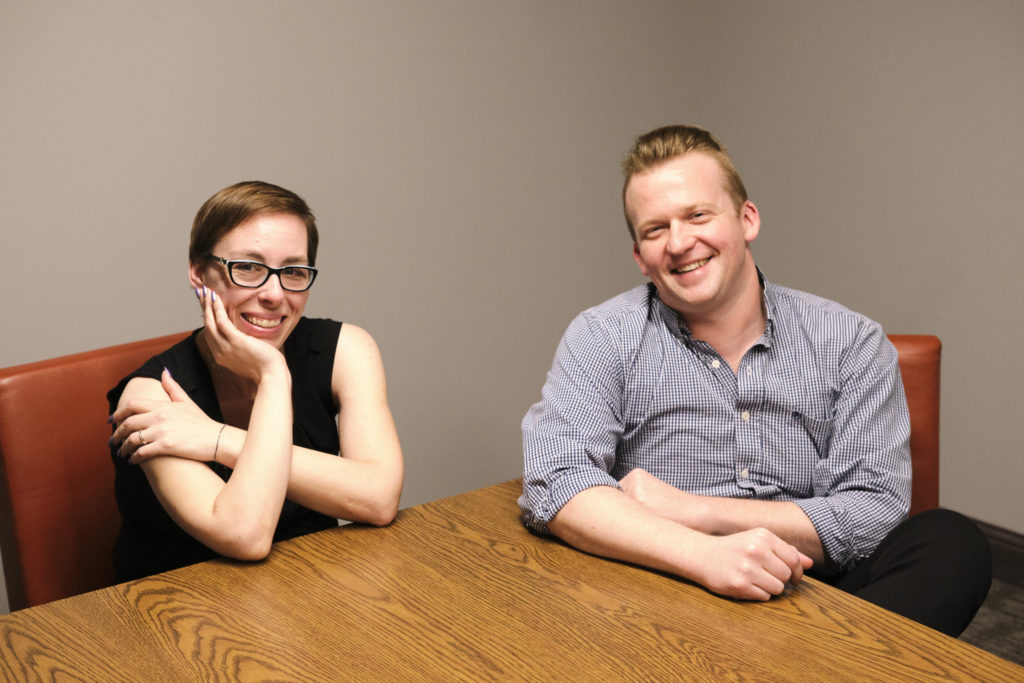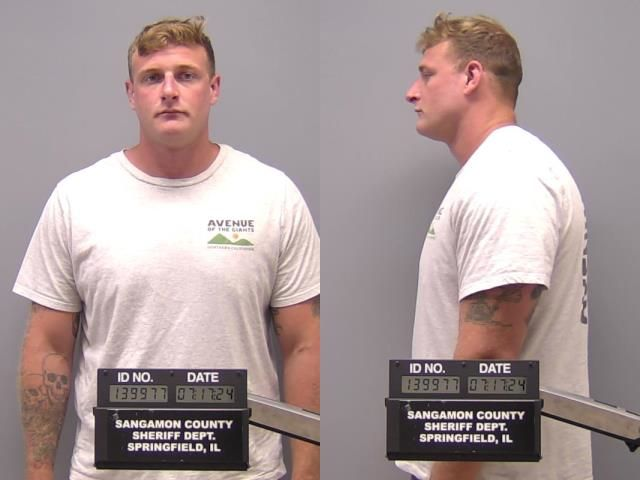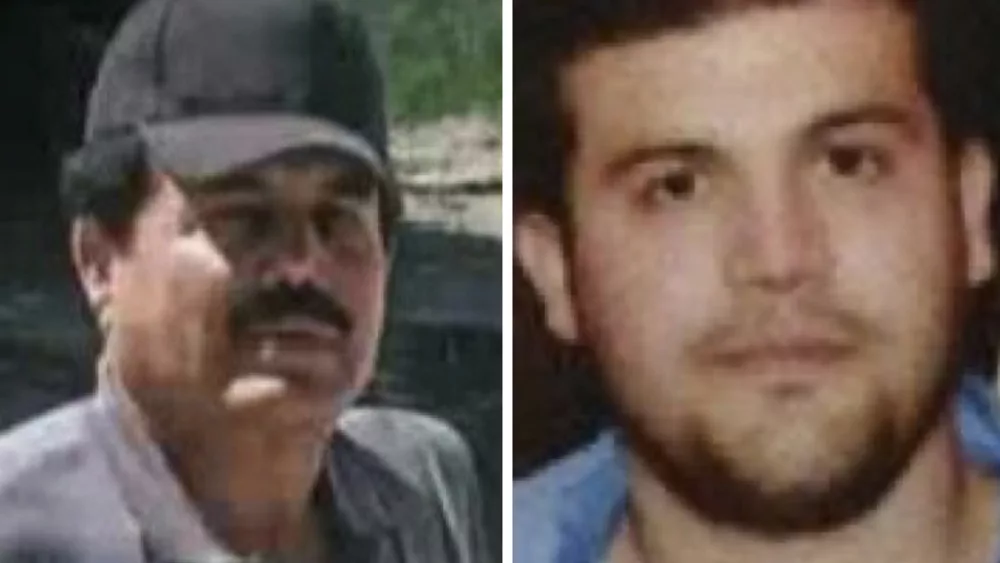The homeless issue in the United States is – to some, varying degrees – nuanced as it concerns both causes of and remedies for homelessness across any one community, let alone an entire nation. It is both an economic problem, as well as a moral blight.
While over a half million Americans are homeless as per the statistics kept by the United States government – and many millions more housing insecure or homeless by some other definition than that which the US uses – questions are constantly arising concerning how to remedy this great social terror in the fairest, most economically efficient and forethinking manner possible.
The city of Springfield is buying into the sort of good-sense solutions supported by the likes of the Heartland Continuum of Care – literally – while so many other institutions and individuals continue to do their own parts, in conjunction with the continuum and independently of it; Director Josh Sabo and Community Housing Navigator Nick Dodson of the Heartland Continuum have previously sat down with WMAY to discuss what precisely they see as the future of social innovations across Springfield, Illinois, and the greater nation.
Meanwhile, it is an institution like the Helping Hands of Springfield – led by Executive Director Laura Davis – which is one of those institutions that works – in many ways – in conjunction with the Heartland Continuum of Care.
Our previous conversations with Executive Director Davis were also, of course, very illuminating as it concerns housing, homelessness, and reaching individuals who have long been spurned by society for one reason or another.
And so, when WMAY’s Trent R Nelson was at the Capitol Building just the other week to cover a few different areas of public life for the community, it was his pleasure to run into both Laura Davis and Navigator Nick Dodson there too.
Their mission that day was very much the practical explanatory application of their daily work. It was the second week in a row that they had been there to speak to the state legislators, and they were feeling both confident and optimistic that their message – and the statistics behind it – were getting through to those in power.
They were each there to discuss the need for greater grant funding concerning permanent and temporary housing – what, later in our sit-down together, they would each term as the “gold standard,” and “silver standard” for remedying the homeless issue of this nation, on whatever scale.
It is likely obvious when stated aloud that housing availability is perhaps the most important factor for someone who needs someplace to call home. Yet the funding that has long been provided – as Davis and Dodson each explained – has never been as much as is needed to actually create tangible change on the necessary scale.
While money does not currently exist as comfortably as it should in order to furnish either permanent or temporary housing at this point, greater state funding needs to be available to institutions like Helping Hands and others to provide the equally important supportive services – necessary at all parts of the assistance process of an individual transitioning from living on the street to living in a domicile – that will help individuals overcome some of the deeper, foundational problems that might very well have contributed to their homeless condition in the first instance.
As we went through all of the usual niceties of greetings and the like and sat down to chat properly, Nick Dodson was – as always – happy to start things up and let us know what his role had been during his time at the capitol building with the lawmakers of the state:
Laura Davis, meanwhile, noted that while Nick was making his case for the benefits of permanent housing and the funding of it, she was making it clear that in any case, further funding was needed for that silver remedy, temporary housing, too.“We were there two weeks – two weeks in a row, in fact. The first week we were there for the Chicago Coalition and Homelessness Advocacy Day; that name – the Chicago Coalition for the Homeless – that name is in itself deceiving. They have been around since 1942, and they are a statewide homeless agency advocacy group.
So even though the name says Chicago specifically, we were there to help advocate for several different bills in the state’s budget in general.
So you know, I was there specifically talking about permanent supportive housing funds and how they need to be increased by some $14.5 million more than the $42.59 million that was available last year.
Furthermore, Laura and I were just educating and – honestly – teaching the legislators, how statistically effective permanent housing is and how, with subsidized housing with, you know, wraparound, supportive services and social support systems, you can get people out of hypervigilance and life on the street. You know, it’s basically four out of five, five out of every six people succeed with those kinds of support systems in place…”
In her current, executive directorial position, she has the good fortune of appraising circumstances in a more macro view – from up higher above the entire fray, so to speak, and noted that Illinois Representative William Guzzardi and a host of others understood what was necessary to do as the state currently enjoys such a positive financial surplus.
To further put their time at the capitol building, in Nick’s own words, an increase in the funding requested by each of them will work to ensure a great deal more can be accomplished.“Permanent, affordable housing is the gold standard. That’s what we want to get everybody into. There simply aren’t enough units. There are not enough support services either. We can’t take everybody right now and just put them in an apartment with adequate supportive services because there just literally aren’t enough. With that properly understood, we as a society have better to fund emergency and transitional housing – the silver standard – and that starts at the shelter level.
Unfortunately, the availability of affordable housing has not kept pace with the rise in homelessness. We have a significant gap in housing availability and access to public housing vouchers.
Our coordinated entry list is already in the hundreds, and excludes many of the most vulnerable in our community due to lack of engagement. People sit on the streets and in underfunded shelters on a waitlist that grows longer each day. Our underpaid staff struggles to maintain a safe environment while we lower our barriers so that people with substance use.
So I was there really advocating for an increase in funding for emergency shelter. And they’re [the state of Illinois] looking at a $51 million increase in that line item – from its current number of $10.38 million – because it’s been so severely underfunded for so long.
Because – and you know, as I’ve talked about before – we as a society decide that this, whatever this is, is what we’re going to fund, and so we’re going to take money from over here, and we’re gonna put it all over here without actually realizing that the returns on these investments all take time.
You know, we’re behind the eight ball as it concerns helping the disenfranchised. And so, if you take money from one part of the system and overfund another part of the system, the entire paradigm all falls apart. You have to do it across the board, you have to like there is a transitional period of time where you have to fully fund the system, and then give agencies people an opportunity to work themselves through that system. You can’t just fund one part of a system and think it’s all going to work.”
When asked what exactly a Springfield – and greater society for that matter – would look like, should the requested funding be appropriated towards confronting the issues of homelessness and housing insecurity, along with what the Heartland Continuum is doing and getting ready to further do in conjunction with Springfield and Sangamon County, Director Davis painted a picture of adequacy, compassion, efficiency, funding and a full slate of staff members.“It [the funding] will ensure the creation of permanent housing and adequate funding of the support system, as well as those social workers who give their time and efforts each day; they need reasonable, sustainable and livable wages, and in order to attract more individuals towards this sort of work, making it feasible to do and sustain a life and future through is crucial as well.
That’s what it comes down to. You know, several folks were 100% on board, like, Representative Gonzalez of the Chicago area. You know, Representative Hernandez, Representative Guzzardi, Representative LaPointe, there were several people that were just like, “I’m already on board.” They were just already 100% behind what we were saying, which made it all really beautiful to discuss and explain with and to them.”
As we were getting ready to end our chat and carry on our respective days, Housing Navigator Dodson noted that, economically speaking, all folks – from politicians to businesspeople and companies alike – have plenty of incentives to fund and look for solutions to the problem of homelessness and housing insecurity.“…For us, it really looks like having the new facility fully staffed to where we can have safe levels of interaction and staffing itself. We’re not – and we never want to be – turning people away; when we are not properly staffed and with the proper resources, however, we are not best able to serve those that need us most.
With a staff of 24, we provide trauma-informed, lows barrier overnight emergency shelter for approximately 56 adult males; a drop-in day center with access to basic needs, an embedded medical clinic, and case management, two permanent supportive housing projects; a rapid rehousing program; and a representative payee program for 125 individuals experiencing or at risk of homelessness; last year, we provided services to approximately 55 unique individuals, and directly housed around 75.
And so, with the funding we requested, we can have the staffing levels to make sure that everybody’s safe in the temporary housing that we can have available for people who need it. Then, the case managers who really identify people, can put them toward the resources to get them housed.
And whether it’s supportive housing, or if they don’t need that, you know, just directing them, helping them fill out applications, getting them out of the shelter system as quickly as possible and then following them through the journey, to remains as those emotional and practical supports once they’re housed.
When you look at a lot of the homeless crisis response models that exist, they often stop at housing. As it takes them from street shelters, you know, outreach and stuff, then you put them in a mass shelter, you get them into supportive housing, and then the model simply stops, because there’s this assumption that those supports will be there, or perhaps aren’t needed or the obligation of the state beyond that point. But mass shelters are not an appropriate setting to address issues of addiction, mental illness, and chronic medical conditions.
Therefore for us, the model starts, and must start there across the board. To have somebody that these folks, transitioning from life on the street to one with more structures, complex pressures, and demands, can connect with – at the street or shelter level – who can follow them through the journey, that they’ve already built a relationship of trust with, that they already know, and who knows where they came from, what they struggle with, and what those signs are when they start to struggle, is all just massive.
You as an individual know that we, the Heartland Continuum and Helping Hands, can help you stay stable in your housing, and that is an important level of comfort and assistance that can only be offered to people with adequate funding.”
“There’s a lot of money involved in just taking care of one another. There’s a lot of money in housing – affordable housing in particular. And like, you know, a lot of people don’t think about it that way – or maybe they don’t even want to think about it that way.
It’s like, well, if there’s not a lot of opportunities to build and develop the high-income apartments, there’s quite a lot of opportunity in the moderate to low-income affordable housing rates and especially when subsidized by the state – any state for that matter.”
As was noted in the analysis WMAY published not long after our initial discussions with the likes of the Heartland Continuum of Care and the Helping Hands of Springfield, individuals cannot simply be distilled into economic projections or monetary figures.
While their economic impacts on the society are lost when they do not cooperate and take part in certain basic economic and practical functions, this is of course not the sole and exclusive reason why homeless and housing-insecure individuals must be aided.
They – as all humans do – exist as beings with feelings, memories, lives, hardships and traumas; they are us, and must be treated first as people before they are looked at as economic potentials, incomes, and tax brackets.
Yet, Dodson stated a practical reality just as WMAY was leaving the thoughtful and informative meeting that we simply thought too poignant and powerful to pass up including in this reflection of our time speaking altogether.
“Until we – as individuals and as a society – make the quality of each person’s existence as important as individual and collective economic production or function, economic and collective arguments are always going to be the ones that reverberate most powerfully with people.”
Our thanks to Executive Director Davis, the Helping Hands of Springfield, and all of their staff for their time and consideration.





